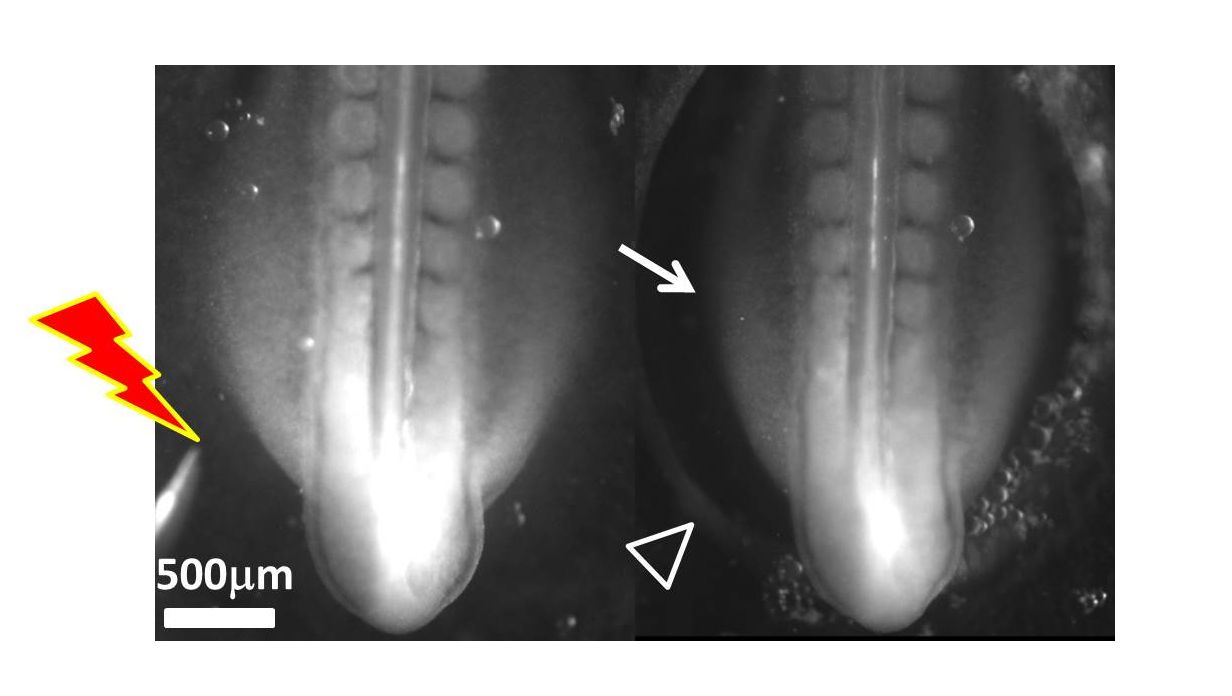
Embryology: a sequence of reflexive contractions triggers the formation of the limbs
It normally takes about 21 days for chicken embryos to develop into chicks. By observing chicken hindlimb formation, a CNRS / Université de Paris research team1 has just discovered that the mechanism at the origin of embryonic development consists of a sequence of reflexive contractions. The researchers were able to artificially recreate the same process and accelerate it by as much as a factor of 20. Their findings have been published in the European Physical Journal on August 15, 2019.
- 1Its members hail from the Laboratoire Matière et Systèmes Complexes (CNRS / Université de Paris).
In its first days of life, a chicken embryo may be likened to a flat disc internally organised into concentric rings. During its development, the embryo stretches, rolls up and twists, this seggregates the concentric rings into as many folded tissues, which eventually give rise to various anatomical features. The scientists realised that during formation of the future chick’s tail, one of these rings is stretched and mechanically deforms the posterior region of the embryo. This deformation sets off a series of reflexive contractions of the surrounding rings, exhibiting a domino effect. The contracting rings fold to yield the primitive contours of the hindlimbs.
In order to prove the physical nature of this phenomenon, the researchers designed an electric stimulator through which they administered brief low-intensity shocks (1 volt for 1–3 seconds) to the posterior portion of the embryo. These impulses mimicked the effect of a mechanical deformation like that produced during tail formation, triggered embryonic development in a cascading pattern, and even accelerated it up to 20-fold.
The scientists would like to pursue their research by investigating the technical limits of this discovery. Furthermore, this new method may be used outside the field of embryonic development, to study the effects certain diseases have on cells.

© Fleury et al. / CNRS photo library
Electrical stimulation of developmental forces reveals the mechanism of limb formation in vertebrate embryos, Vincent Fleury and Ameya Vaishnavi Murukutla. European Physical Journal E, 15 August 2019. DOI: 10.1140/epje/i2019-11869-8. https://rdcu.be/bOXG1


